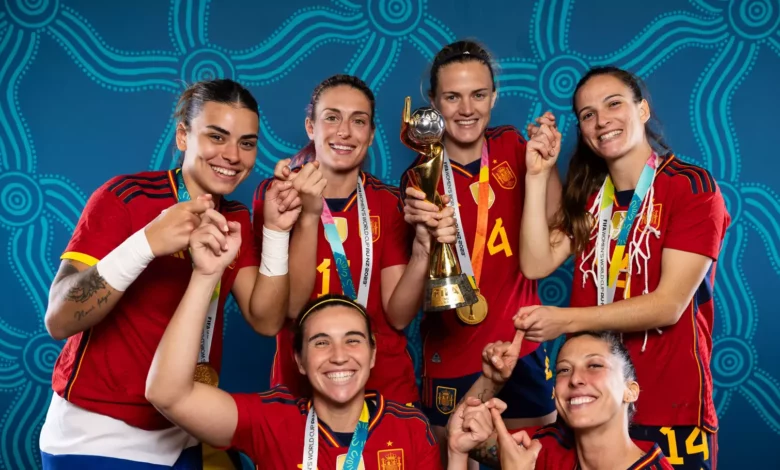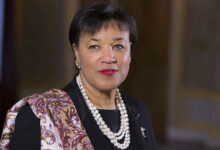Spain reign as Women’s World Cup goes beyond greatness

WELLIGTON – Slogans can often be empty but, in ‘Beyond Greatness’, the FIFA Women’s World Cup 2023™ found both a mission statement and a fitting epitaph.
France 2019 had, after all, been genuinely great. The challenge for Australia and New Zealand, for FIFA and for the 32 teams involved, was to raise an already-high bar to an entirely new level.
Plenty had predicted the opposite would happen, and that this would be a Women’s World Cup of regression. The expansion from 24 to 32 teams, said the sceptics, would lower standards and result in more mismatches. The location, in two nations traditionally dominated by other sports – and in a time zone that provided awkward kick-off slots for major markets – would result in sparse, disinterested crowds and disappointing viewing figures.
Those doubts were first dispelled, then demolished. When FIFA President Gianni Infantino this week described this Women’s World Cup as “truly transformational”, he had ample evidence to back up the assertion. “In the host countries, we had almost two million spectators in the stadiums – full houses everywhere – and two billion watching all over the world,” said the FIFA President. “It’s great sport, it’s entertaining and people love it.”
Australia and New Zealand proved perfect co-hosts, and the tournament comes to a close with attendance and viewing records having been ripped up and rewritten, and the beautiful game well and truly out of the sporting shadows. As Australia’s Minister for Sport, Anika Wells, said: “The sleeping giant has awoken. Australia is now a football country.”
As for the expansion, far from lowering standards, those additional teams – including eight debutantes – brought richness, variety and contributed to some seismic shocks. That unpredictability culminated in two first-time finalists battling it out for the trophy, and in Spain deservedly beating pre-final favourites England to win their maiden senior title.
“We knew they were the best possession team [at the World Cup] before the tournament, but they were even better [than we expected],” acknowledged Lionesses coach Sarina Wiegman. “They deserved this.”
Wiegman admitted to having been taken aback by the level of football across Australia & New Zealand 2023, lauding as a “very good decision” the expansion to 32 teams. “I think it was the perfect time for that,” agreed her Sweden counterpart, Peter Gerhardsson. “It perhaps wouldn’t have been right in 2019, but a lot is happening in women’s football right now. At the next World Cup, there will be even more good teams, even more even matches, and it will be harder to qualify in the first place.”
He is doubtless correct. Yet for now, 2027 – however mouth-watering that prospect might already be – can wait. Instead, it is time to remember and celebrate what made this a Women’s World Cup that truly went Beyond Greatness.
Emerging powers
Only four teams had won the Women’s World Cup before this edition, and each member of that elite quartet had bowed out by the quarter-finals. In their place rose the likes of Australia, England and, of course, Spain – all of whom eclipsed their best previous performance – along with an impressive Colombia team, who held their own throughout and ended the tournament as South America’s best-performing side. Africa was also better represented than ever before in the knockout rounds, with a record three teams – Nigeria, Morocco and South Africa – qualifying from their sections.
New stars
As the likes of Marta and Megan Rapinoe bid farewell to the Women’s World Cup, a fresh crop of icons-in-the-making emerged. Linda Caicedo and Lauren James electrified the group stage, while the likes of Kyra Cooney-Cross, Salma Paralluelo and Elin Rubensson became increasingly prominent – and impressive – as the knockout rounds progressed.
Fallen giants
When Germany thumped Morocco 6-0 in their Group H opener, who could have imagined the Atlas Lionesses progressing and the two-time champions – many pundits’ pre-tournament favourites – bowing out? That, of course, was exactly what happened – just a day after Jamaica had held Brazil to qualify at the South American champions’ expense. Next to be sent tumbling was the women’s game’s great colossus, with USA enduring their earliest-ever exit and missing out on a medal for the first time in their history.
Sensational shootouts
The manner of that US defeat will live long in the memory. Sophia Smith and Rapinoe missed penalties which would have won a shootout that was ultimately, albeit extremely narrowly, settled by Lina Hurtig. Yet if we thought that it couldn’t get any more dramatic than goal-line technology determining the fate of the holders and record champions, we were wrong. An even more heart-stopping shootout followed in the last eight, with Australia keeper Mackenzie Arnold saving four penalties – in between missing a spot-kick of her own – as the co-hosts’ last-16 tie with France reached an incredible climax.
Golden goals
A record number of goals were scored at this Women’s World Cup, and the quantity was more than matched by the quality. From Caicedo’s fancy footwork and fantastic finish, through thunderbolts from Braun and Brugts, to the Sam Kerr strike that nearly lifted the roof off Sydney’s Olympic Stadium, there was something for everyone. Fans will able to vote for their favourite right here on FIFA.com.
Medalists
Champions: Spain Runners-up: England Third place: Sweden
Award winners
adidas Golden Ball: Aitana Bonmati (ESP) adidas Golden Boot: Hinata Miyazawa [Japan] adidas Golden Glove: Mary Earps (England) Best Young Player: Salma Paralluelo [Spain].
Standout stats
2 – Almost two million fans, a new record, attended matches, with the final figure standing at a staggering 1,978,274.
3 – Having won the FIFA U-17 and U-20 Women’s World Cup last year, Spain became the first nation to hold all three global titles simultaneously. Salma Paralluelo is the first player to win all three of these FIFA competitions.
5 – Spain became just the fifth team to win the FIFA Women’s World Cup, joining USA, Norway, Germany, and Japan in this elite club.
16 – Korea Republic’s Casey Phair [16 years and 26 days] became the youngest player ever to appear at the Women’s World Cup.
18 – Spain ended Australia & New Zealand 2023 not just as champions but as leading goalscorers, having found the net 18 times.
50 – FIFA’s digital platforms, including FIFA.com, FIFA+ and FIFA+’s FAST Channels, received over 50 million visitors throughout the tournament – a 130 per cent increase on France 2019.
73 – Vietnam’s Mai Duc Duc Chung [73 years and 41 days] became the oldest coach ever to take charge of a team at this tournament.
163 – A record 163 goals were scored, comfortably surpassing the previous benchmark of 146 set at both Canada 2015 and France 2019.
1000 – Zambia’s Barbra Banda scored the 1000th goal in Women’s World Cup history.
770,000 – Over three quarters of a million fans attended FIFA Fan Festivals over the course of this edition.
Buy your copy of thecooperator magazine from one of our country-wide vending points or an e-copy on emag.thecooperator.news







